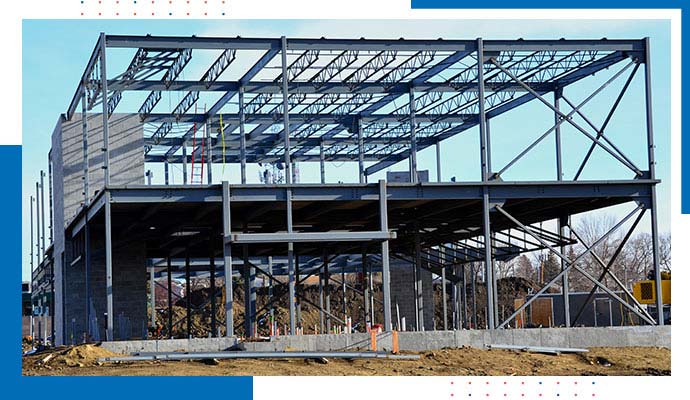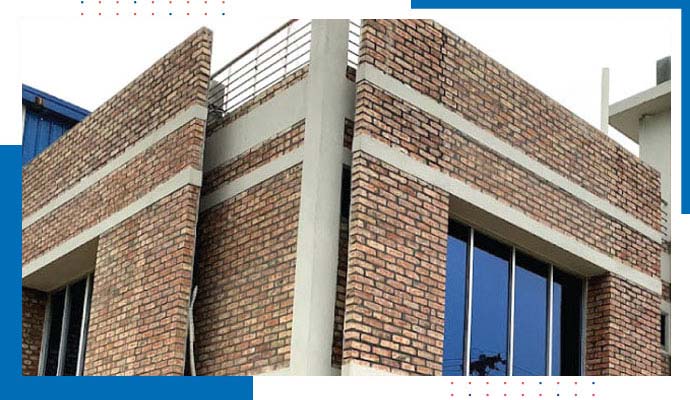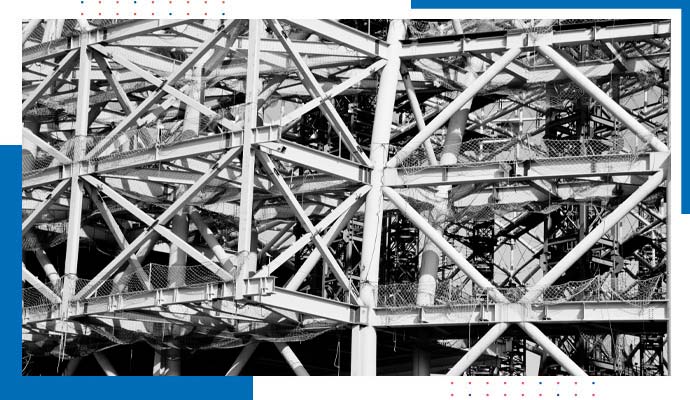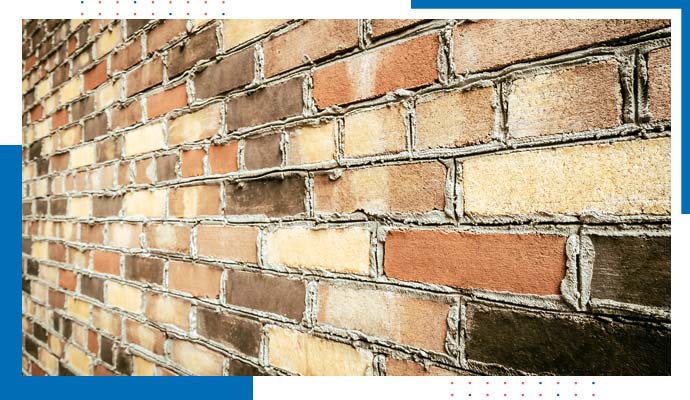Steel vs. Brick: ABC of building materials in Bangladesh
When it comes to building materials, the choice between steel and brick is essential. Each material has unique advantages and weaknesses, thus engineers and builders must understand the the basic building materials. In this blog post, we will discuss Steel vs. Brick: ABC of building materials in Bangladesh.
In Bangladesh, where construction projects vary in size and purpose, knowing when to use steel vs brick can have a substantial impact on project outcomes. By making well-informed decisions based on project requirements, architects can ensure the endurance, safety, and visual appeal of their projects.

What is Steel structure?
A steel structure refers to a construction system where steel beams, columns, and plates are used as the primary structural elements to support loads and provide stability to buildings, bridges, towers, and other structures. It utilizes various types of steel alloys, to achieve desired strength, durability, and performance characteristics.

What is a Brick structure?
A brick structure is a type of construction system where bricks, typically made from clay or shale, are used as the primary building material to form walls, arches, and other structural elements. Brick structures have been used for centuries. Nowadays auto bricks are used instead of normal bricks because of their durability and longevity.
Benefits of Steel structures
Steel is the preferred material of choice for architects, engineers, and builders around the world. Steel structures offer numerous advantages, including superior strength, durability, design flexibility, and so on.
Here we discuss several advantages of utilizing steel in building design:
- Durability and longevity: It is incredibly durable and resistant to environmental factors such as corrosion, pests, and fire. Unlike traditional building materials like wood or concrete, it ensures long-term structural integrity and minimal maintenance requirements.
- Design flexibility: Steel's inherent strength and versatility enable architects and designers to create innovative, customizable structures with intricate shapes, curves, and angles. From soaring skyscrapers to intricate bridges, steel offers endless possibilities for creative expression in architectural design.
- Sustainability and environmental friendliness: Steel is a highly sustainable building material, as it can be recycled infinitely without losing its properties or quality. Steel emits fewer carbon emissions compared to other construction materials, contributing to environmentally friendly building practices
- Resistance to natural disasters: It exhibits high resilience to natural disasters such as earthquakes, hurricanes, and tornadoes. The flexibility allows it to absorb energy, minimize damage, and ensure the safety of occupants.
- Improved safety standards: Steel construction adheres to stringent safety standards and building codes, ensuring the structural integrity and safety of occupants. The predictable behavior under loading conditions allows for precise engineering and structural analysis.

Disadvantages of Steel structures
While steel structures offer numerous advantages in building design, it's essential to know that they also come with certain disadvantages. Understanding these drawbacks can help architects, engineers, and builders decide when to consider steel as a construction material.
The disadvantages of steel structures are as follows:
- Susceptibility to corrosion
- High initial cost
- Thermal conductivity
- Lack of insulation
- Limited fire resistance
- Design constraints
- Environmental impact
- Noise and vibration
Advantages of Brick as a construction material
Brick offers numerous advantages as a construction material, including durability, thermal insulation, and so on. With these advantages, brick remains a pillar of architectural quality and long-lasting building construction methods.
Here are some advantages of brick as a construction material:
- Durability: Brick structures are renowned for their durability, withstanding the test of time and adverse weather conditions. When properly maintained, brick buildings can last for generations, offering long-term stability and reliability.
- Thermal Insulation: Bricks possess excellent thermal insulation properties, regulating indoor temperatures by trapping heat during colder months and providing a cooling effect in warmer seasons.
- Fire resistance: One of the most significant advantages of brick is its exceptional fire resistance. Unlike other construction materials, such as wood or steel, bricks do not burn or emit toxic fumes when exposed to fire, making them a preferred choice for fire-resistant building construction.
- Low maintenance: It requires minimal maintenance compared to other materials. With proper installation and periodic inspections, bricks retain their integrity and appearance over time, reducing the need for costly repairs or replacements.
- Environmental sustainability: Bricks are environmentally friendly construction materials, made from natural clay and shale resources that are abundant and renewable. Their production process consumes less energy and generates fewer carbon emissions.
- Increased property value: Brick structures' enduring appeal and superior quality often translate to higher property values. Potential buyers are drawn to the durability, making them a wise investment choice for homeowners and real estate developers.

Drawbacks of Brick structures
Concrete structures are expensive because they need manual placing of bricks or concrete blocks. It's very time-consuming. It takes a long time to attach one after another. It requires frequent maintenance and repairs. In addition, construction is dependent on favorable weather conditions.
You must only relocate or redesign if you disassemble the entire thing. High winds, salinity, moisture, and fungus can cause irreversible damage. Recycling is not an option, as it has a long-term detrimental environmental impact
Final remark
In the world of architecture, the debate between steel and brick continues to evolve, with new materials and technologies constantly reshaping the scenery. However, by understanding the ABC of building materials and embracing the unique qualities of each, architects can create unique designs that stand the test of time.
Whether it's the sleek modernity of steel or the timeless elegance of brick, the key lies in finding the perfect balance between form and function, innovation and tradition. NB Auto Bricks of N. Biswas Group plays an important role in construction building. It is called the number 01 auto brick in Bangladesh. Contact us today to learn more about us.
Explore!